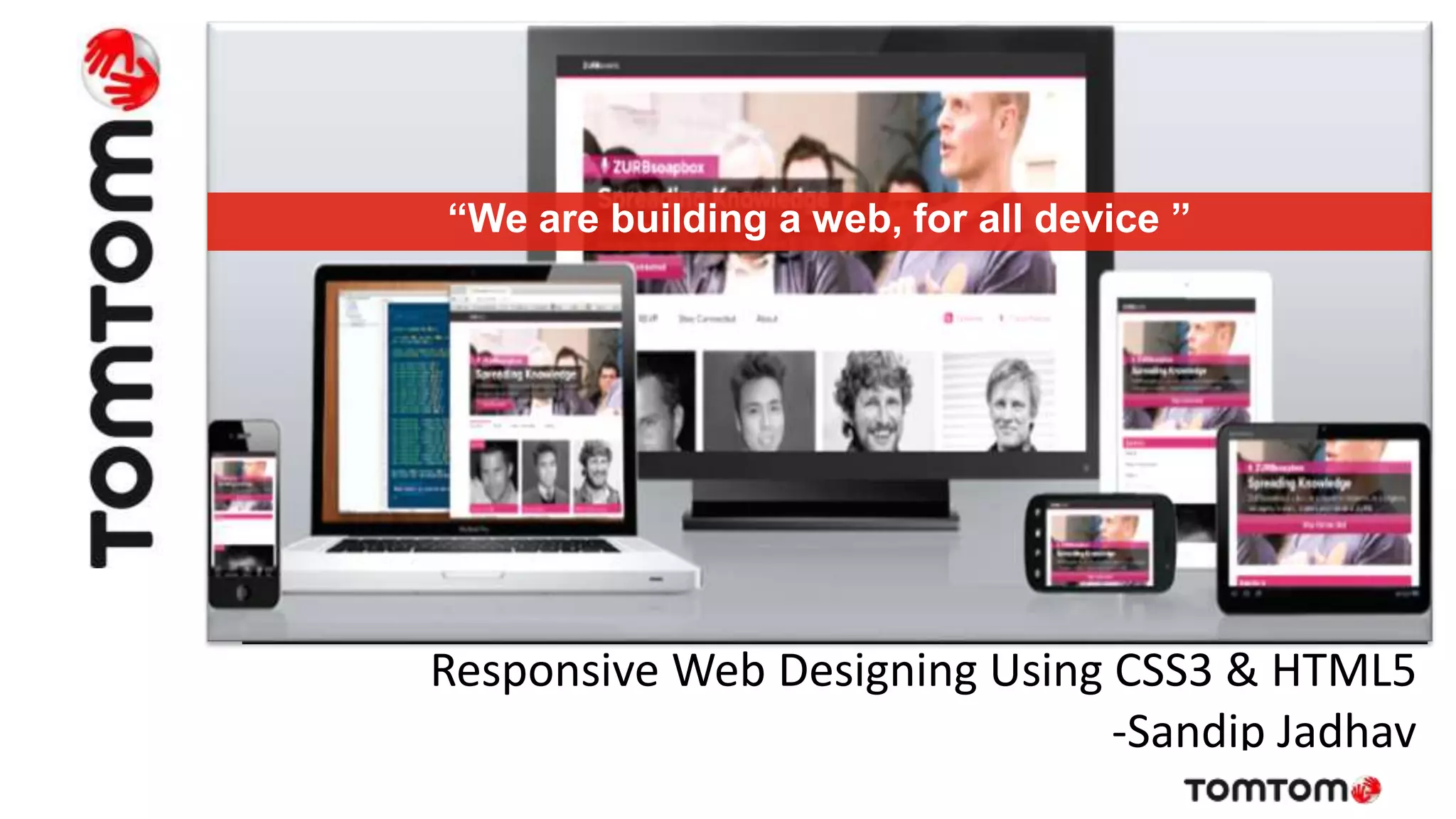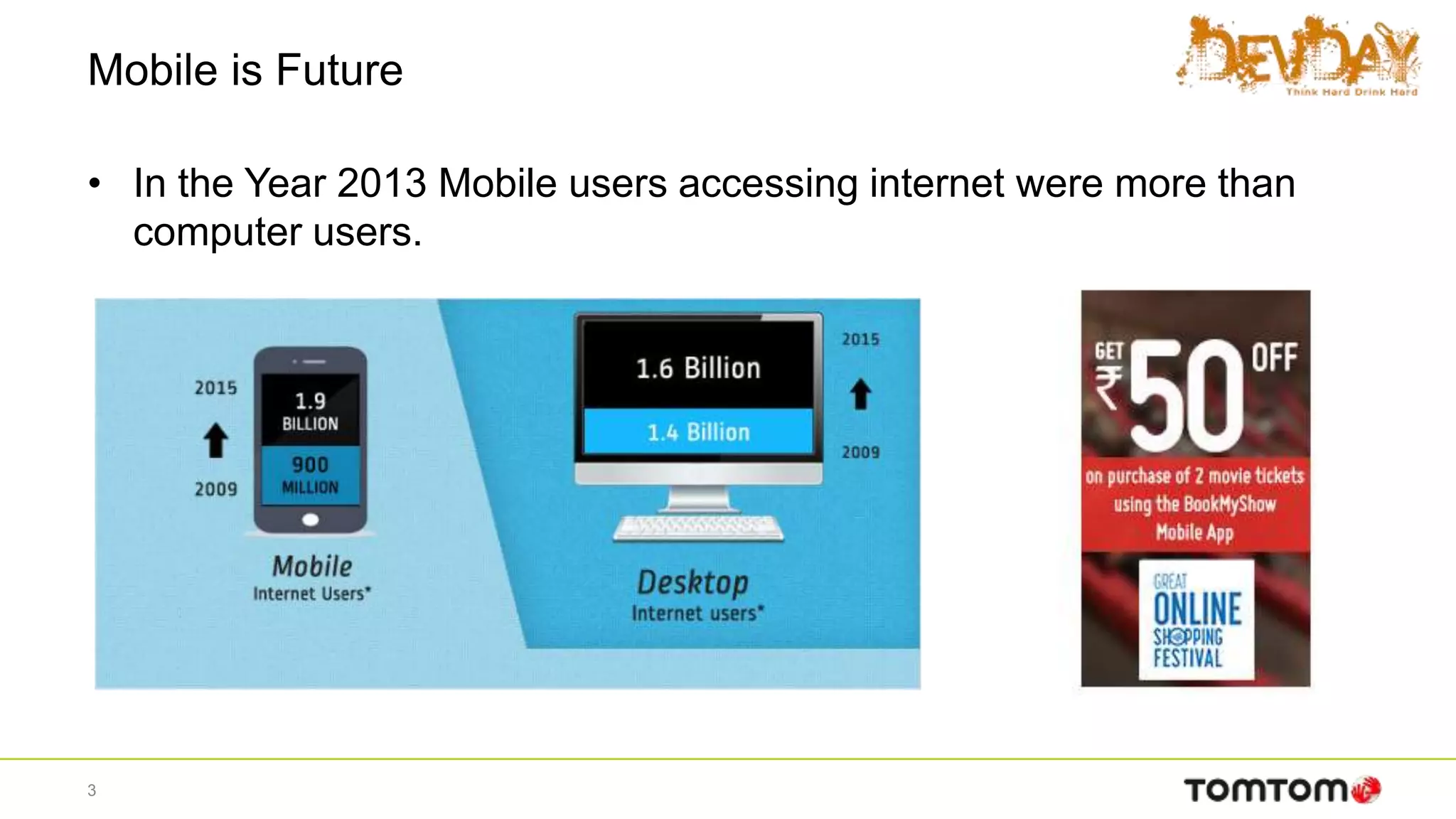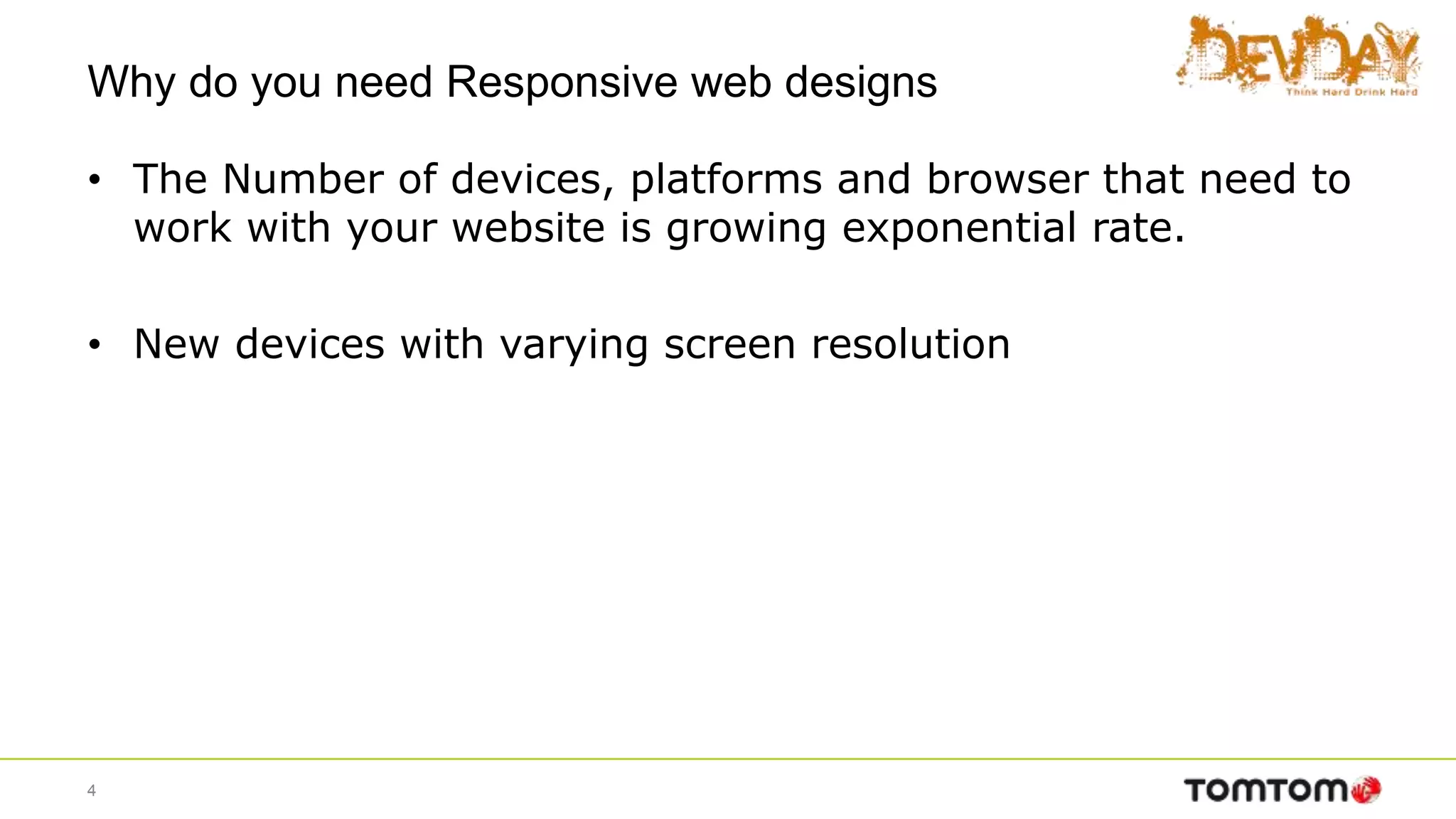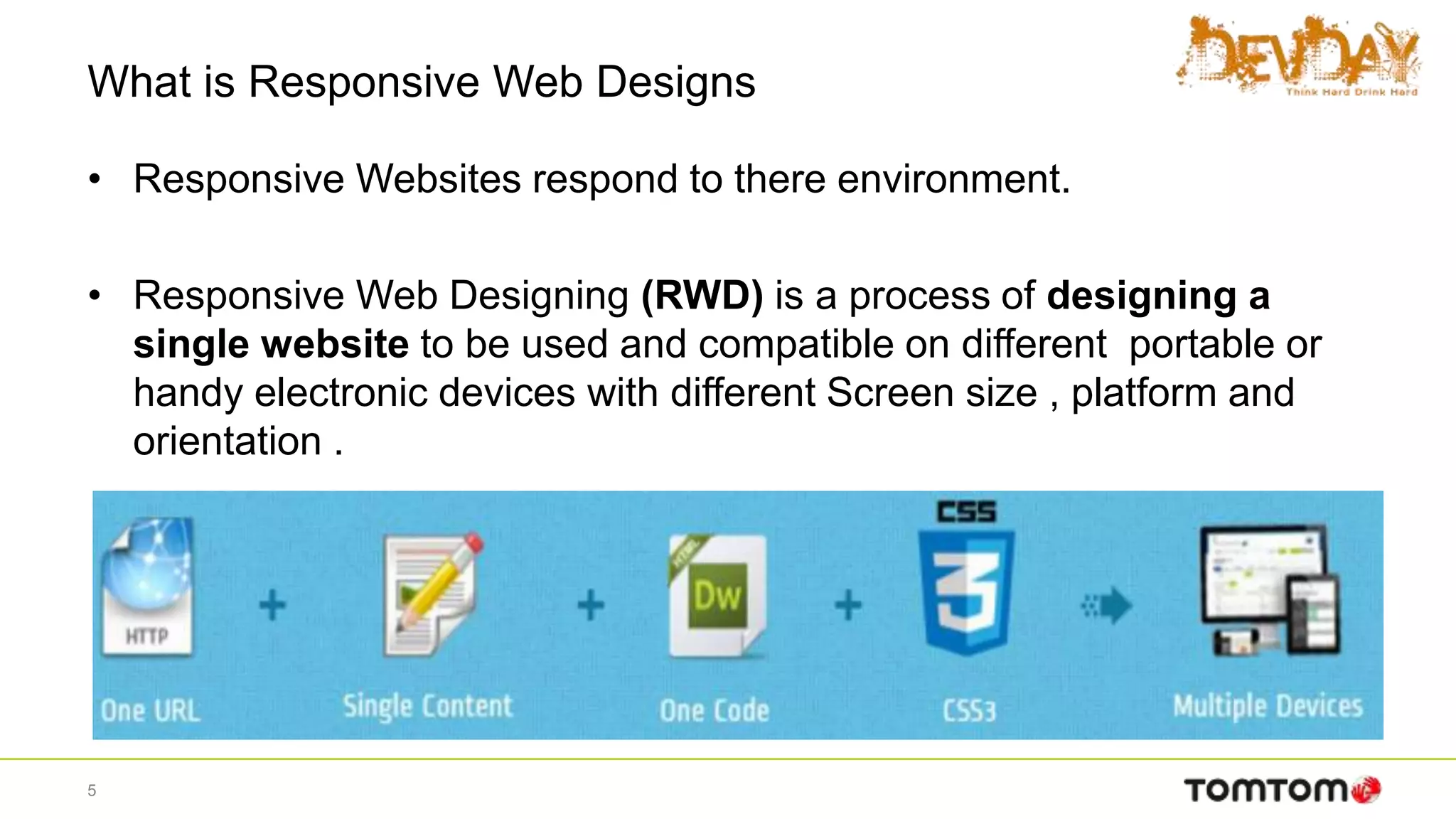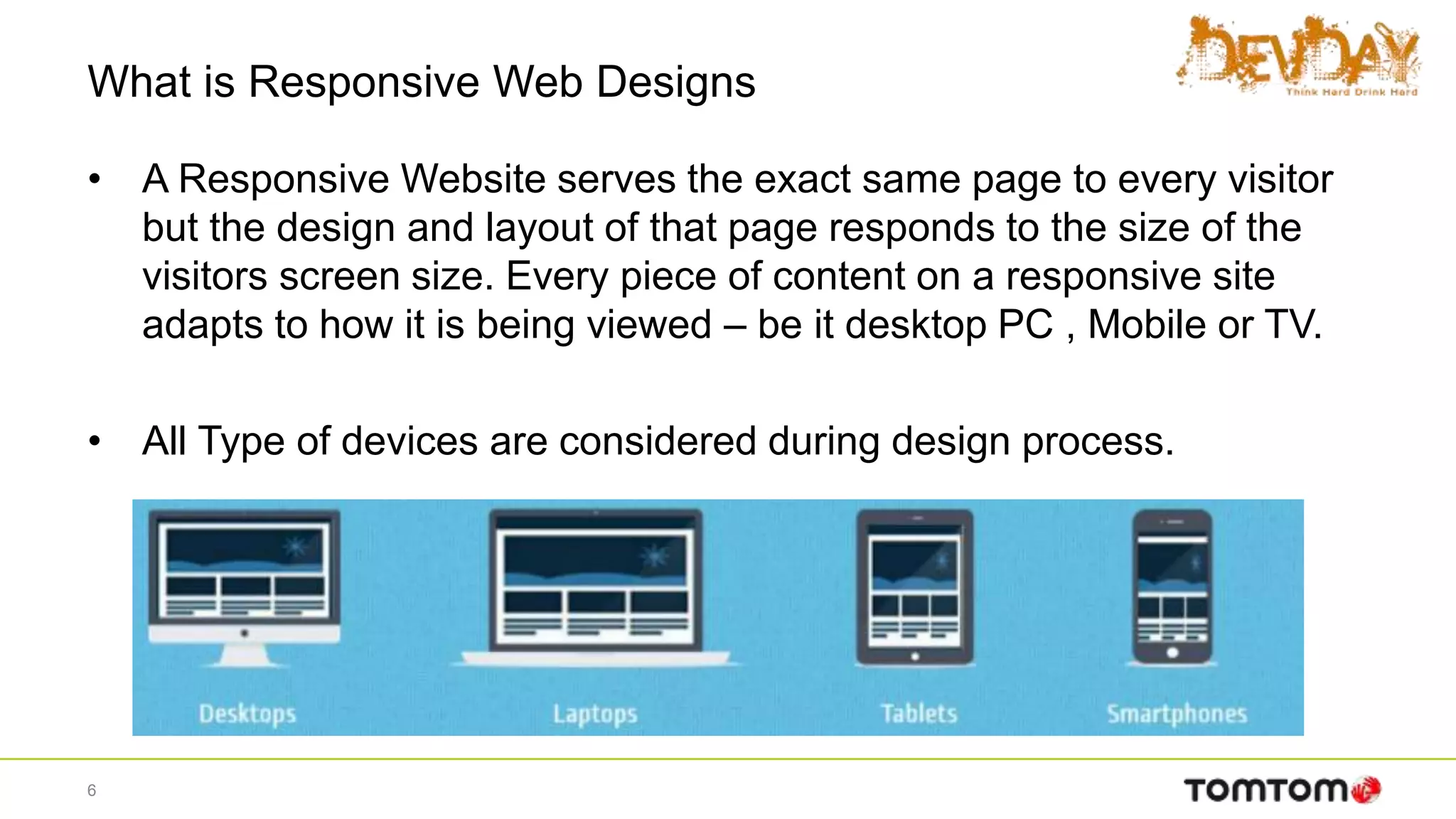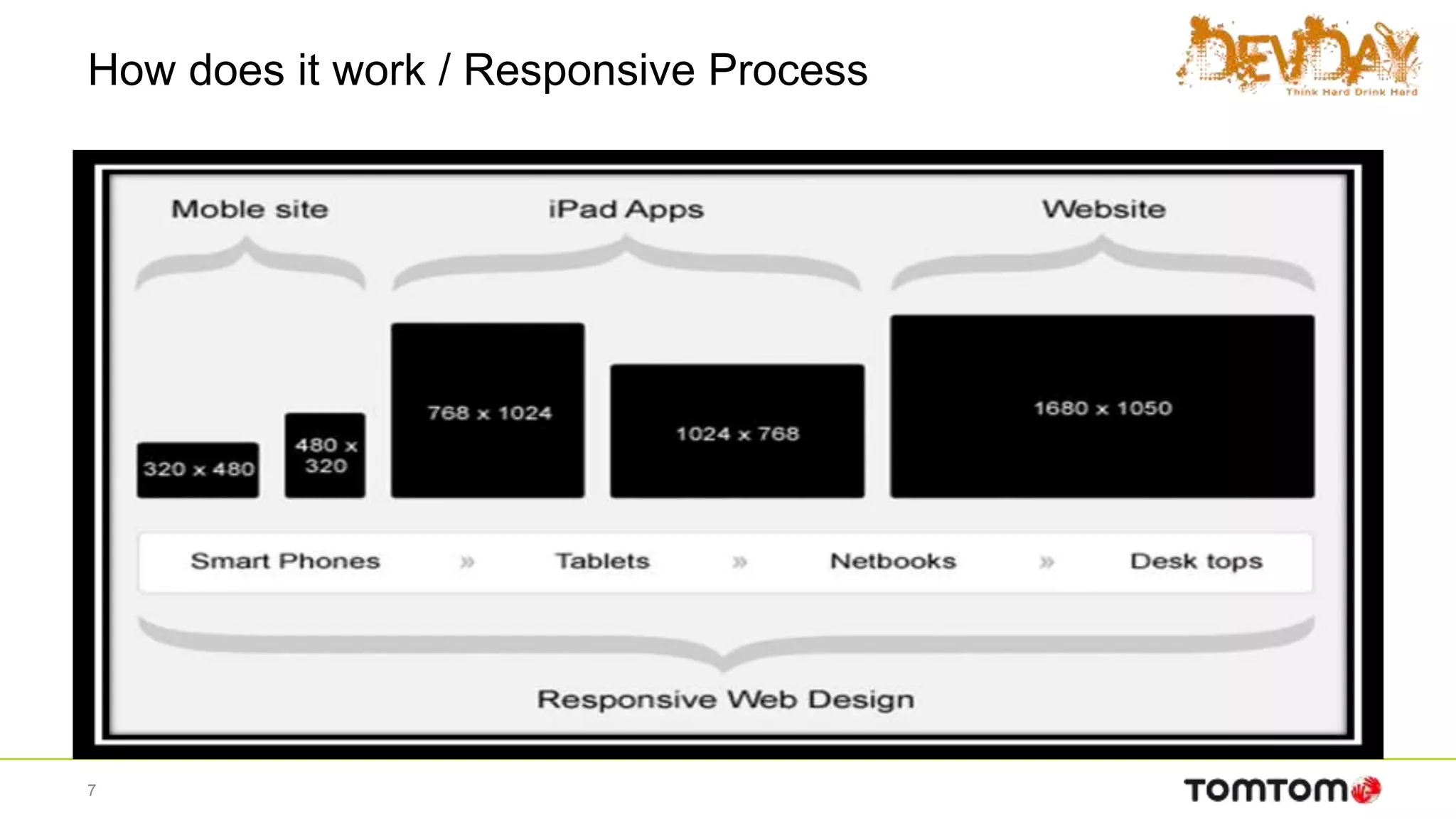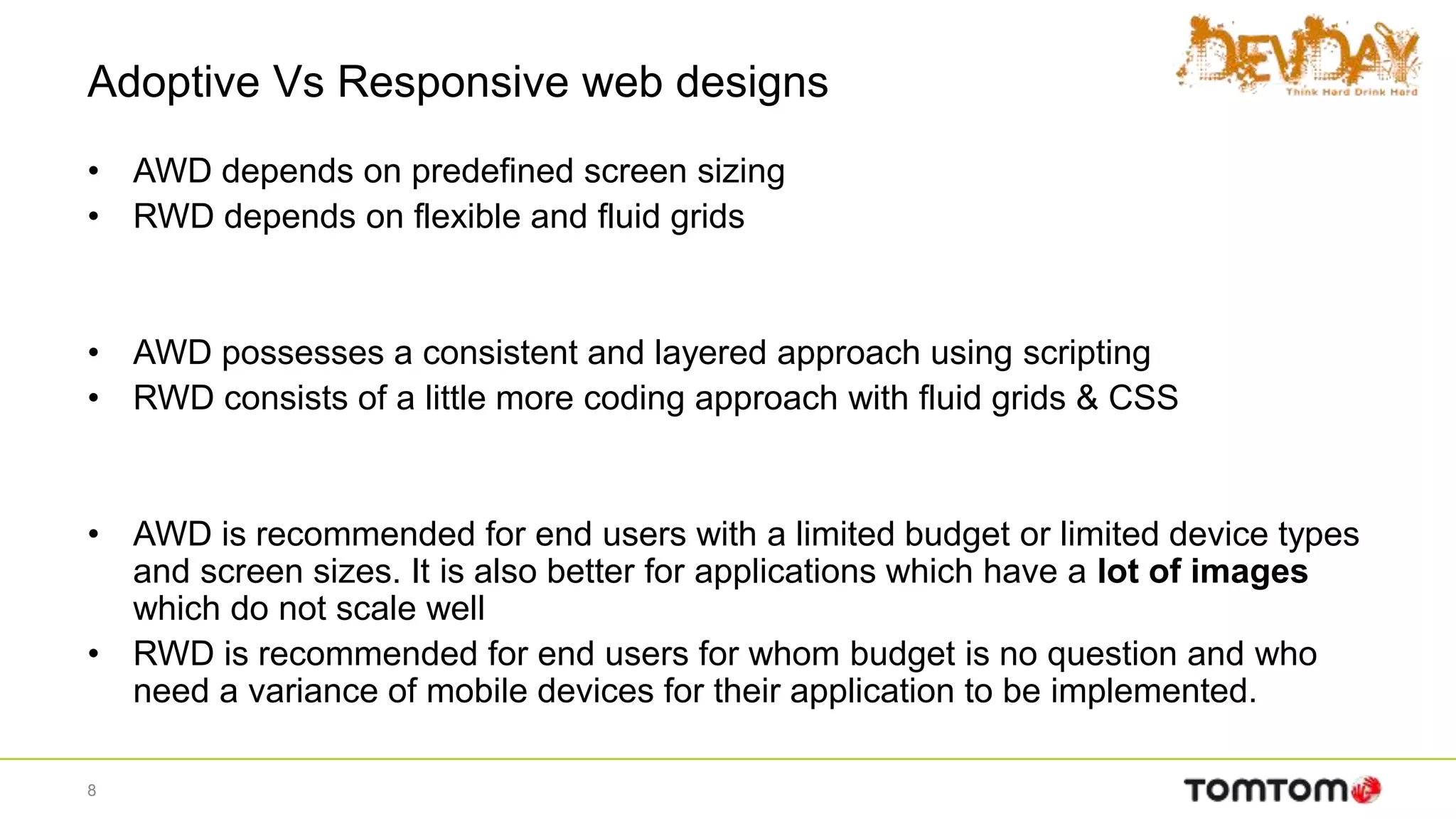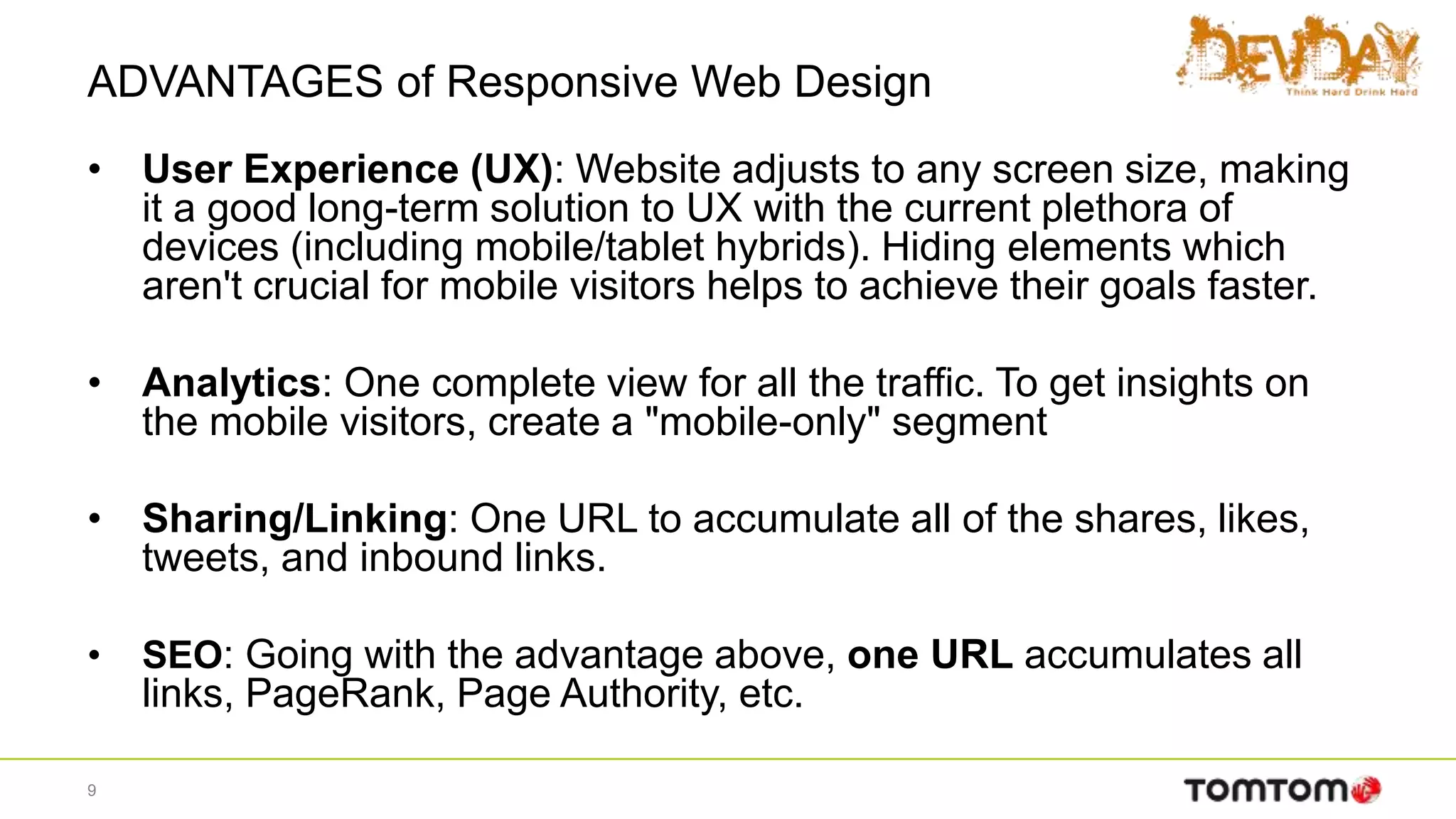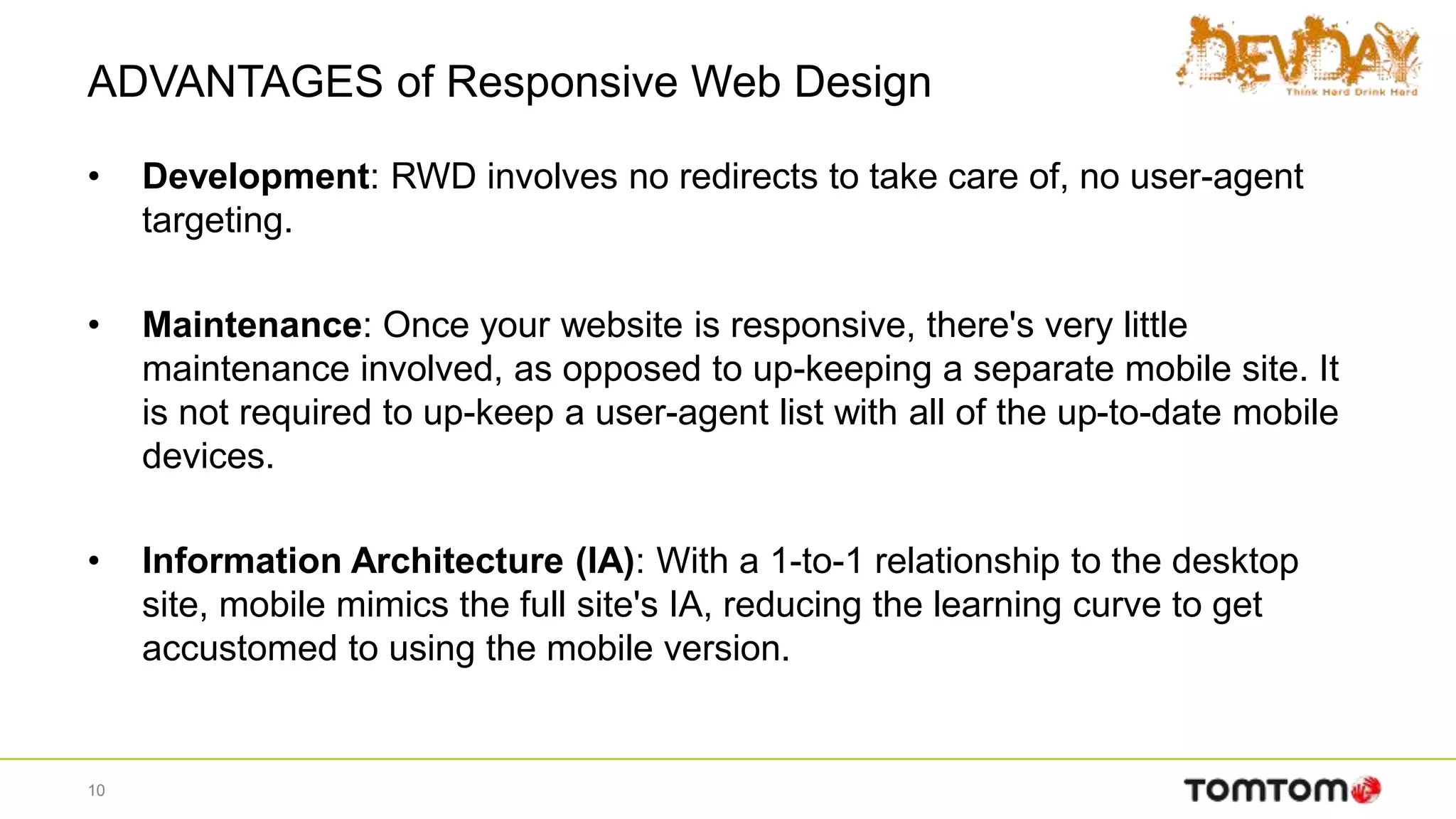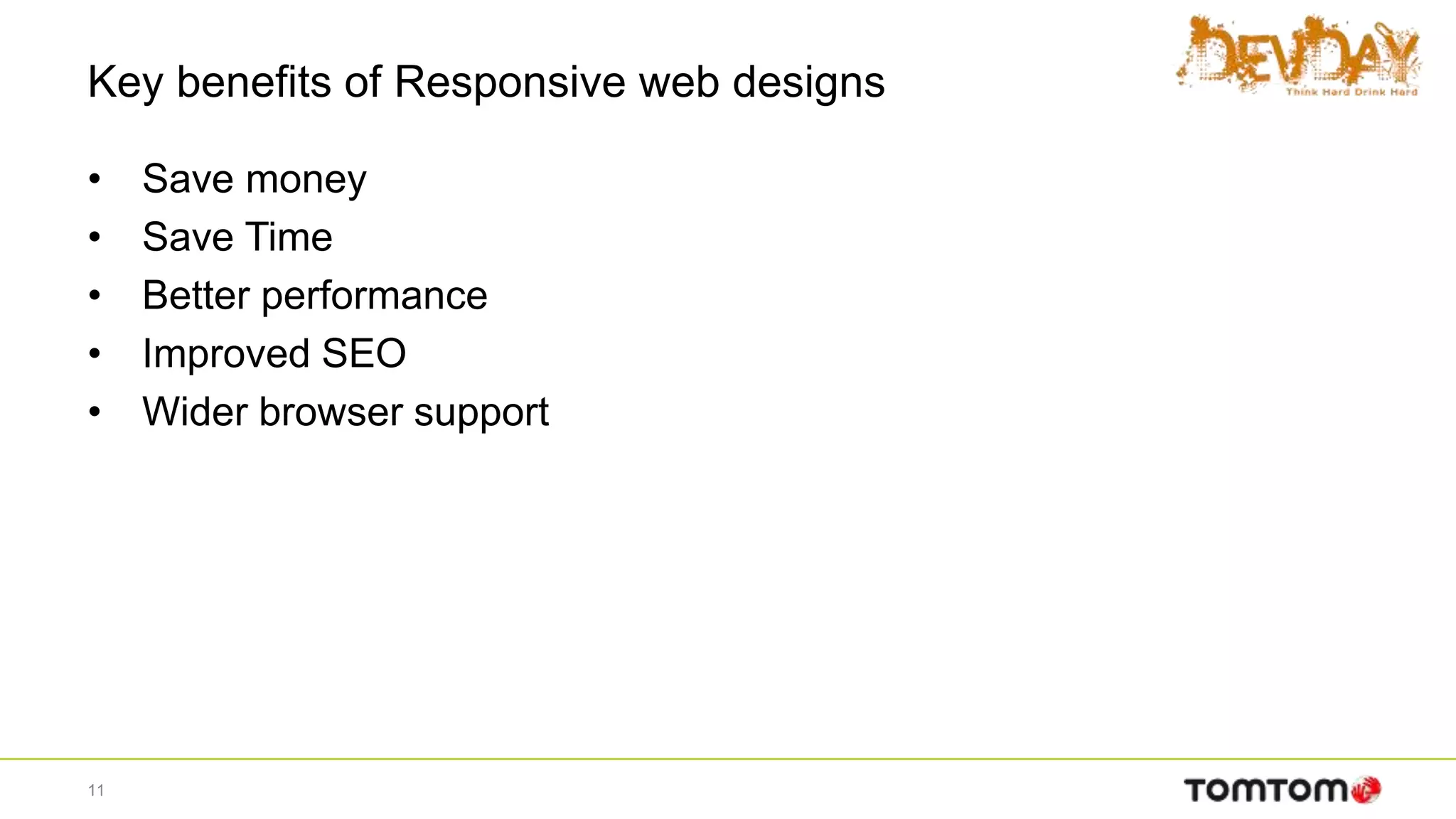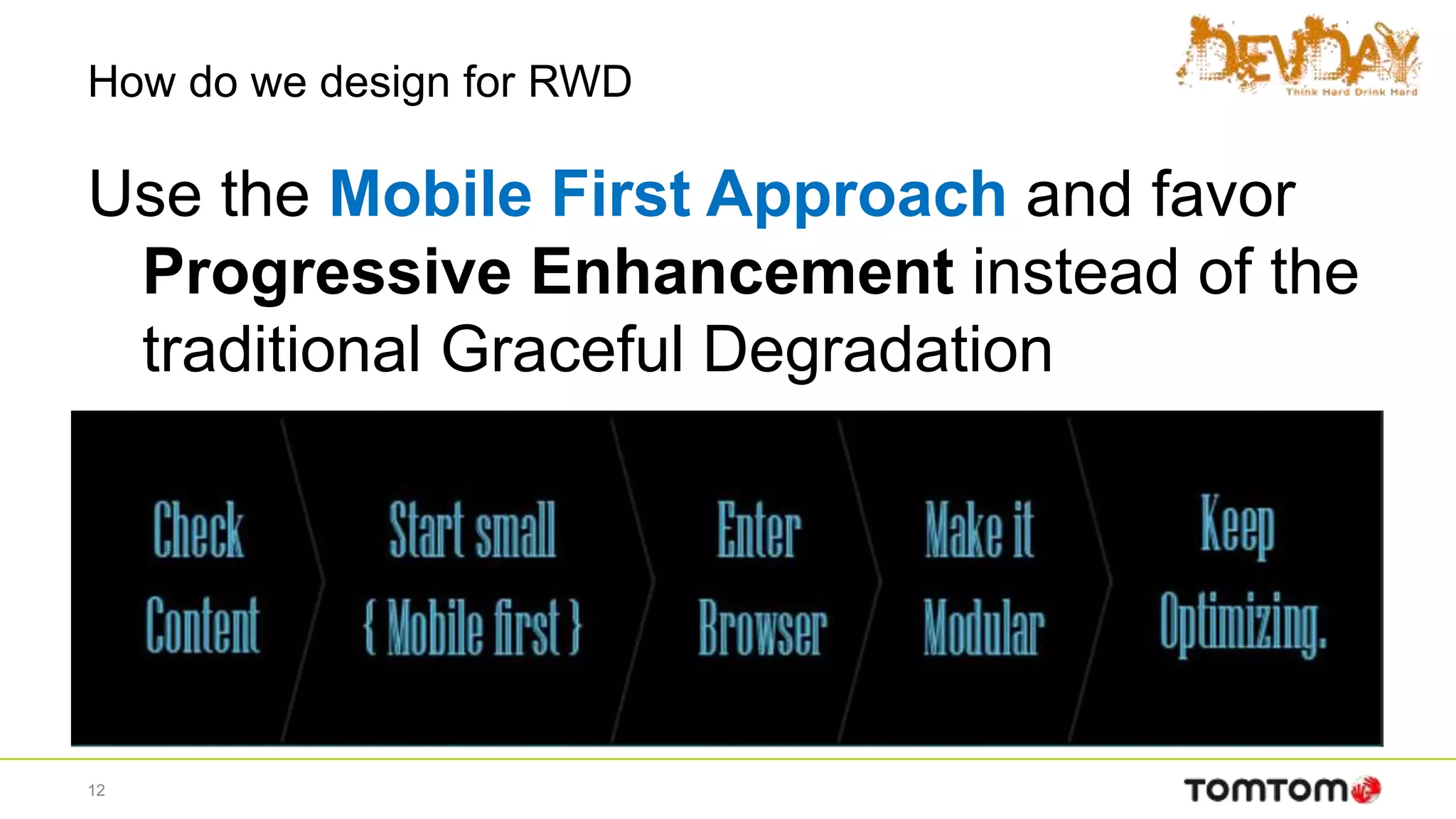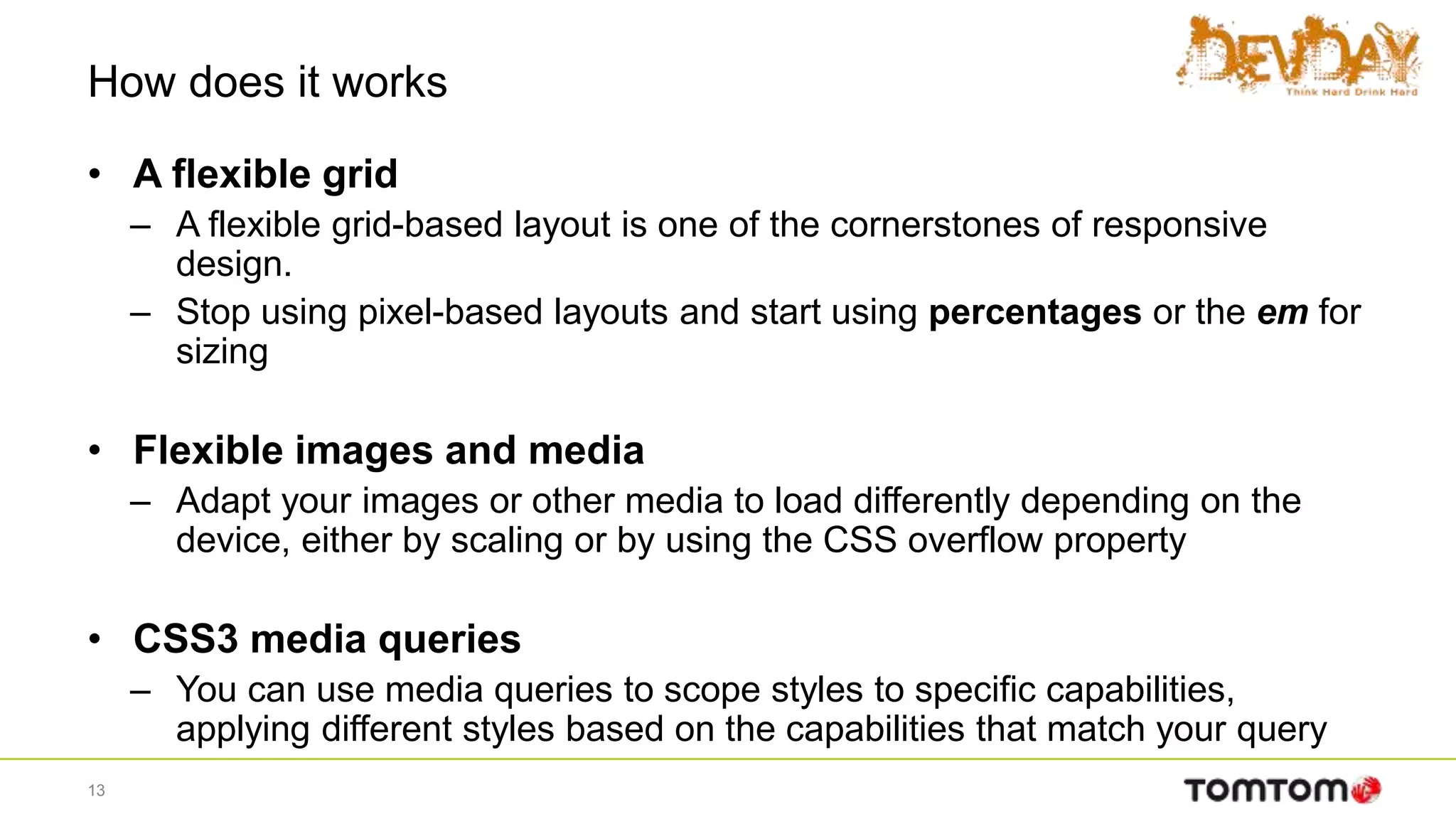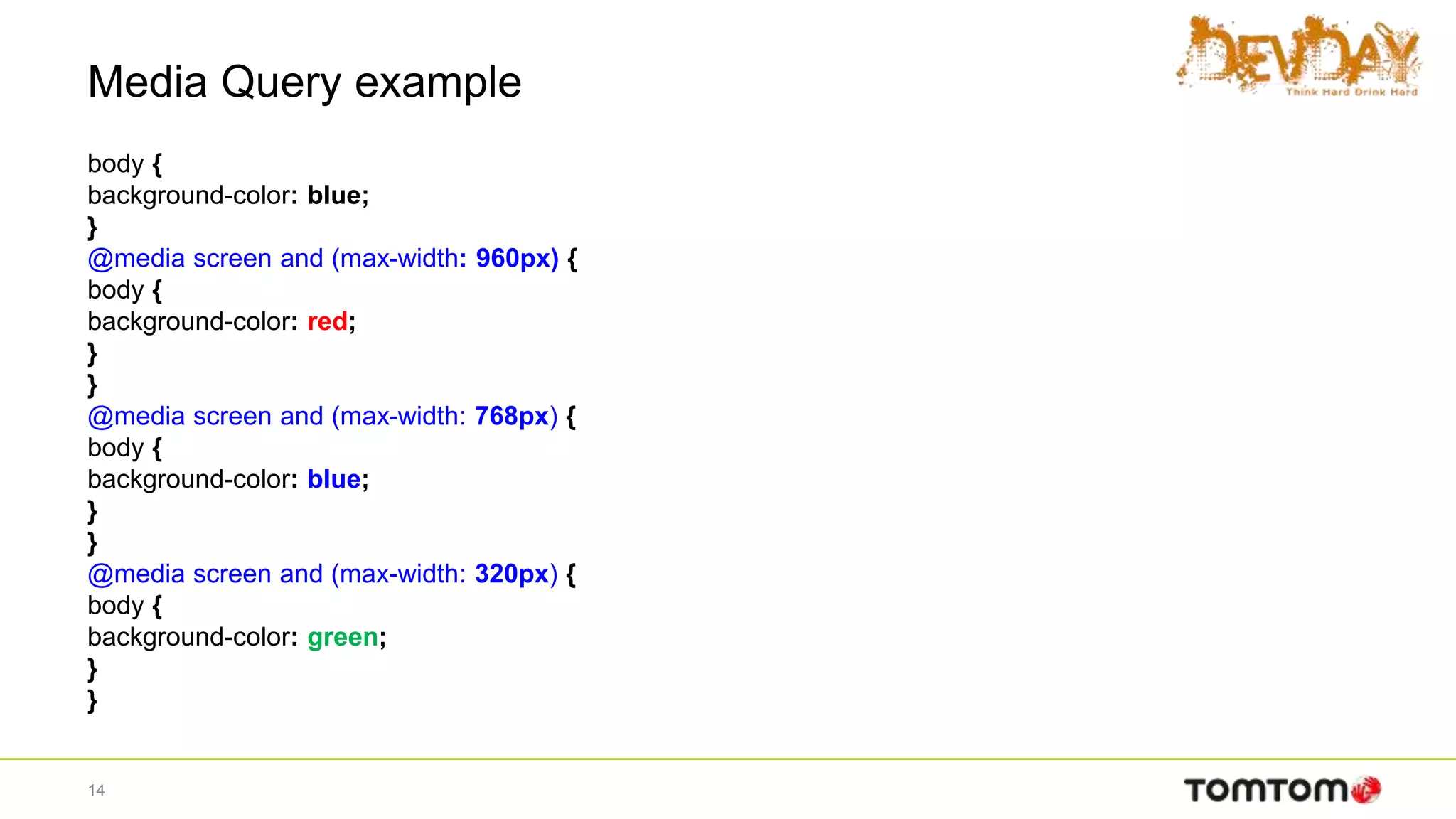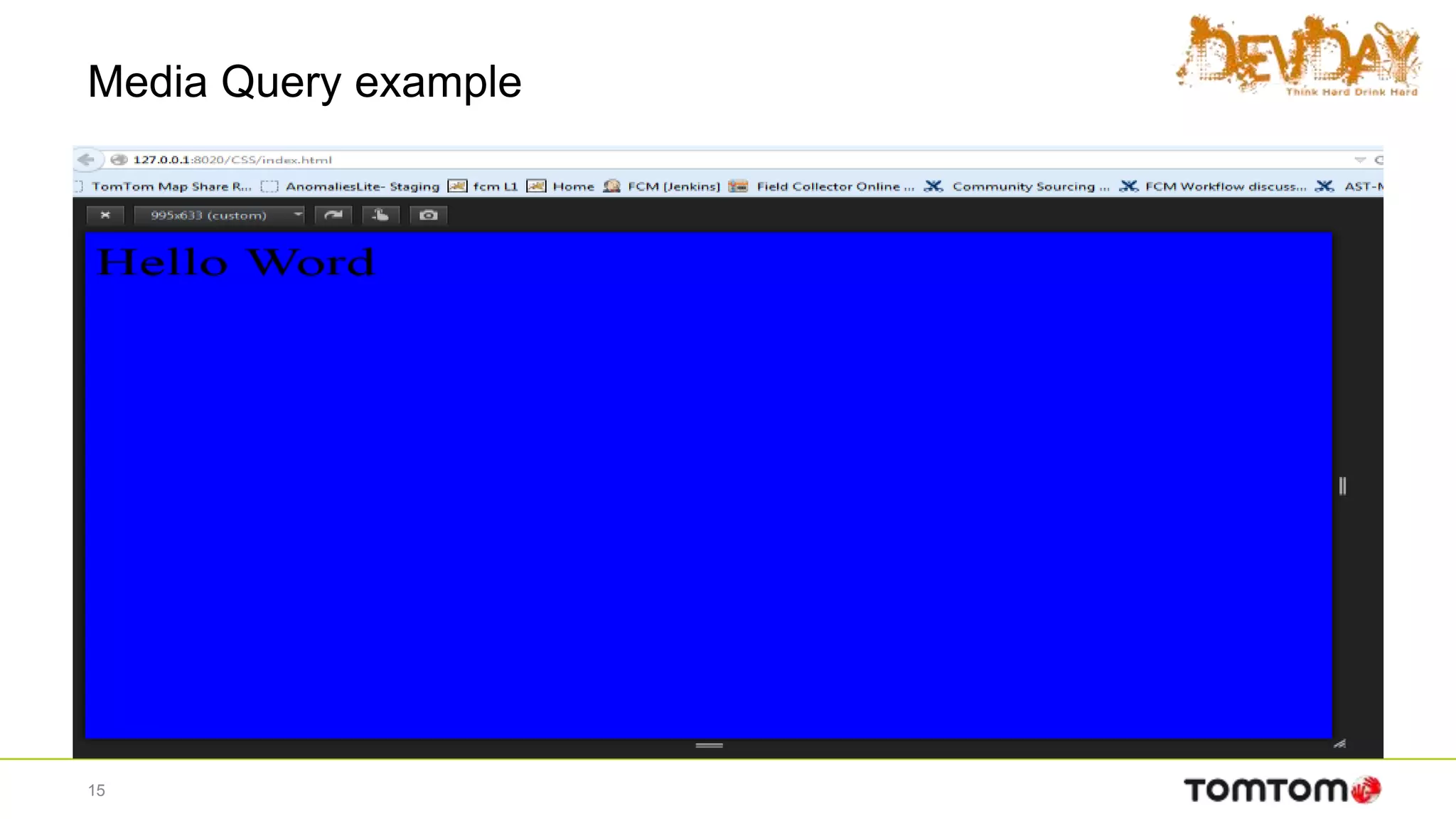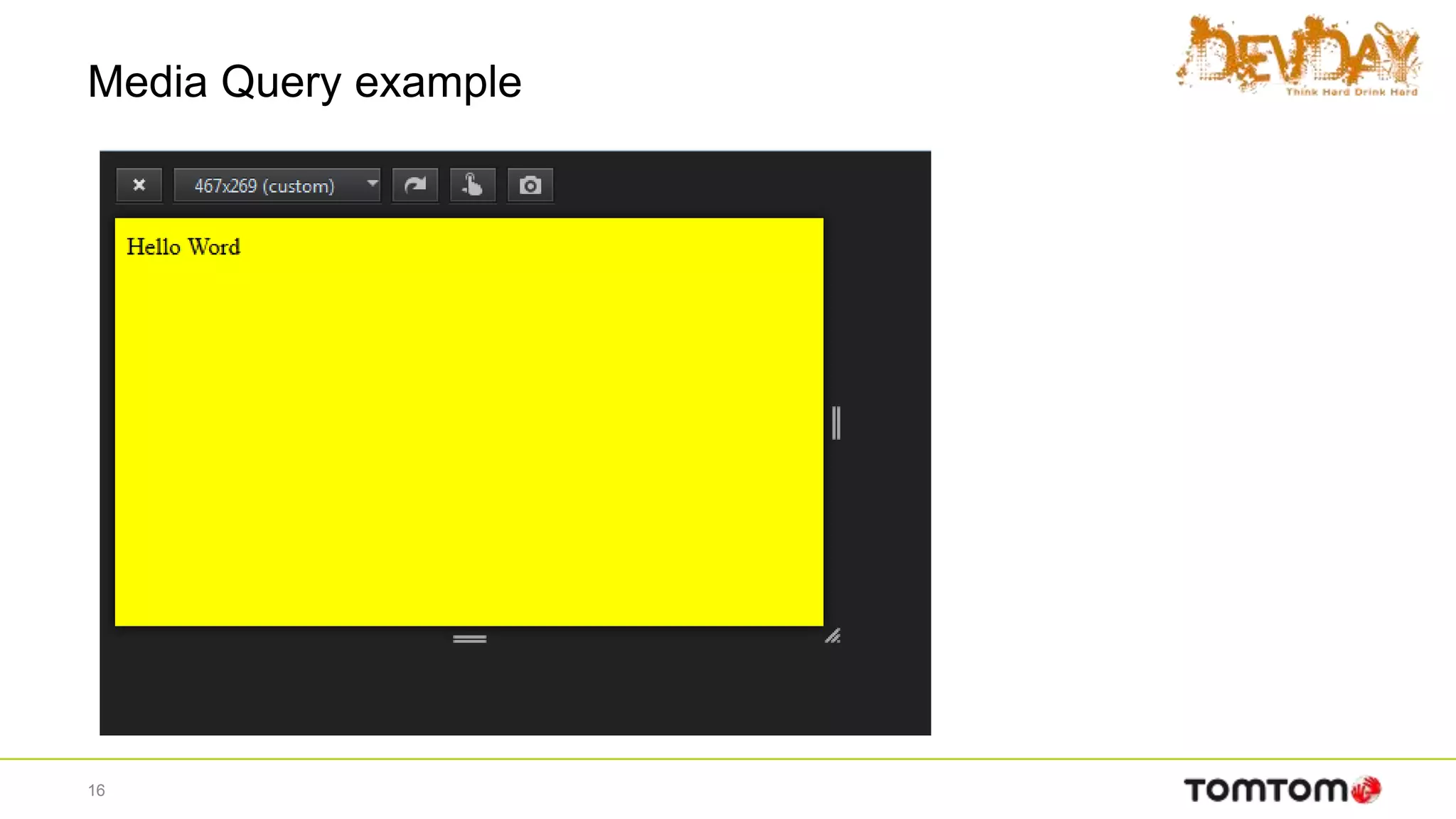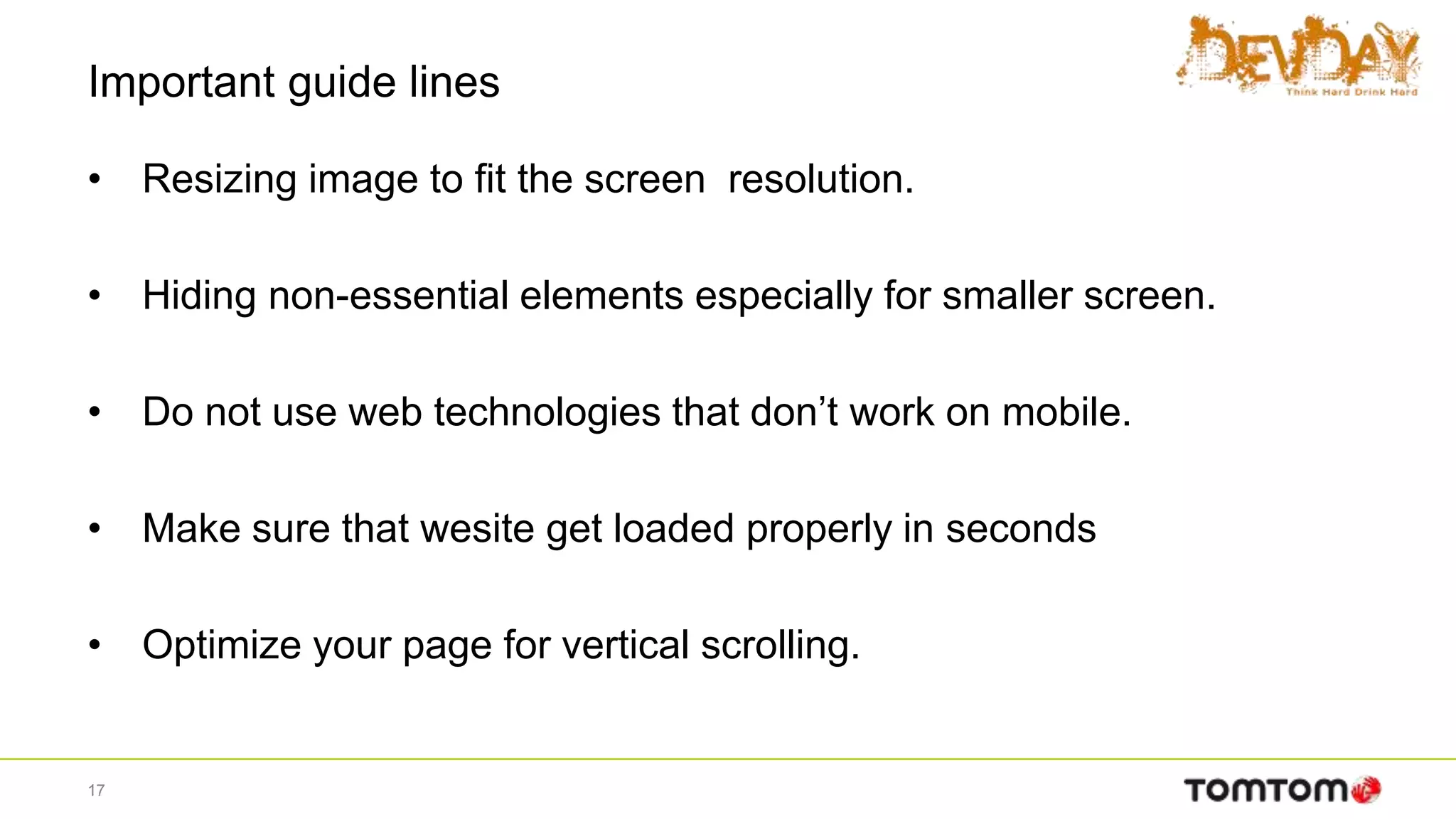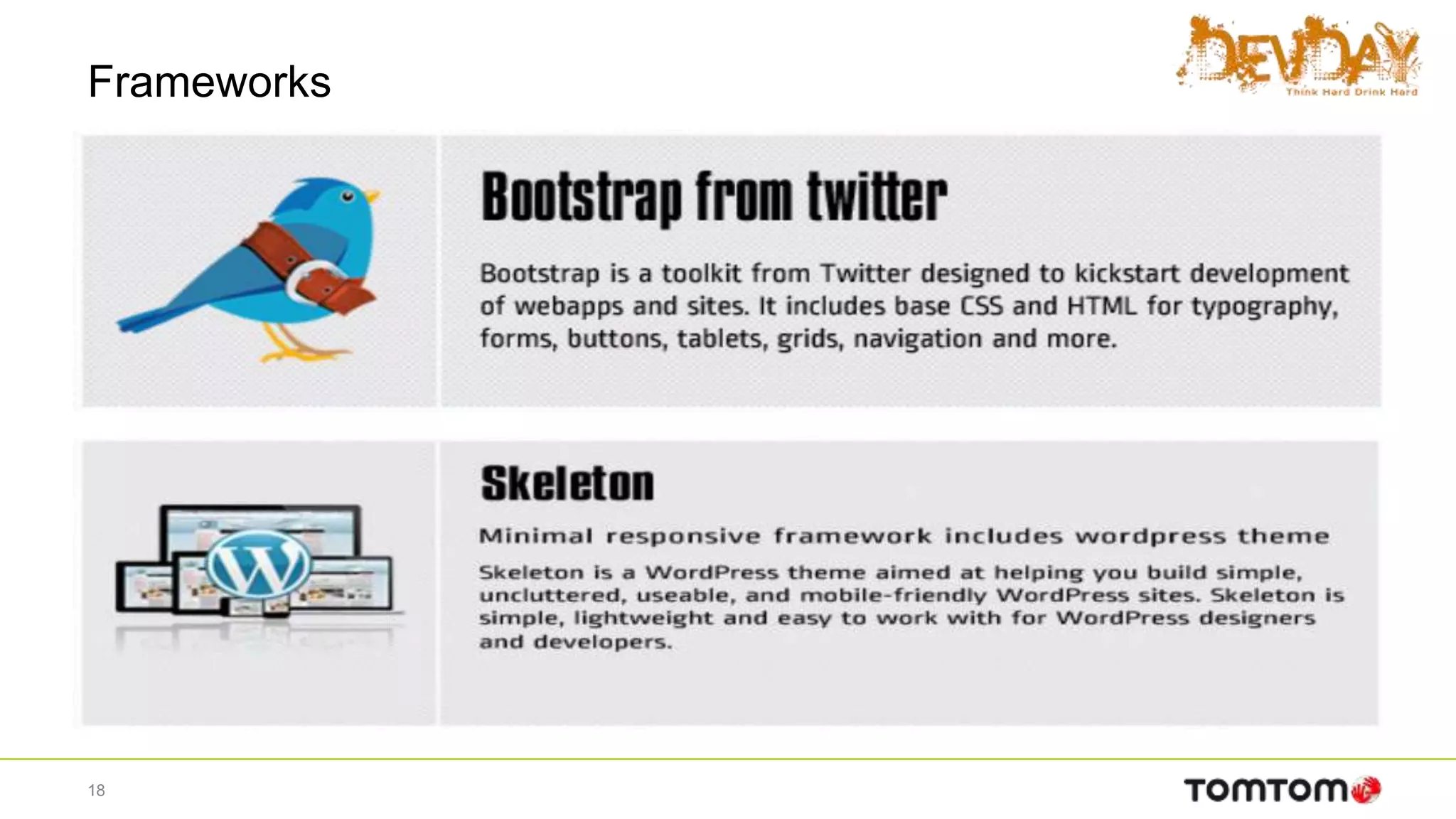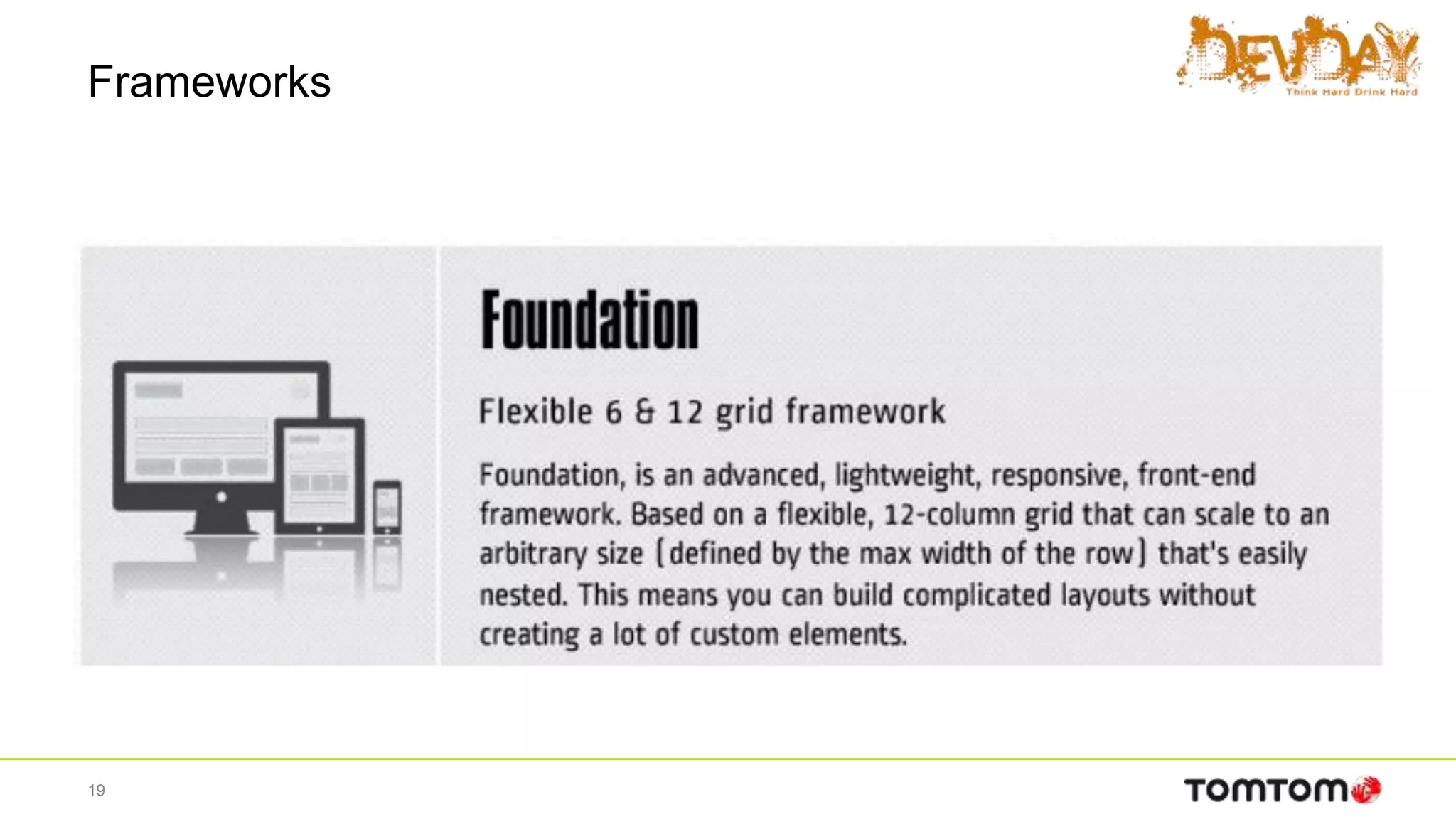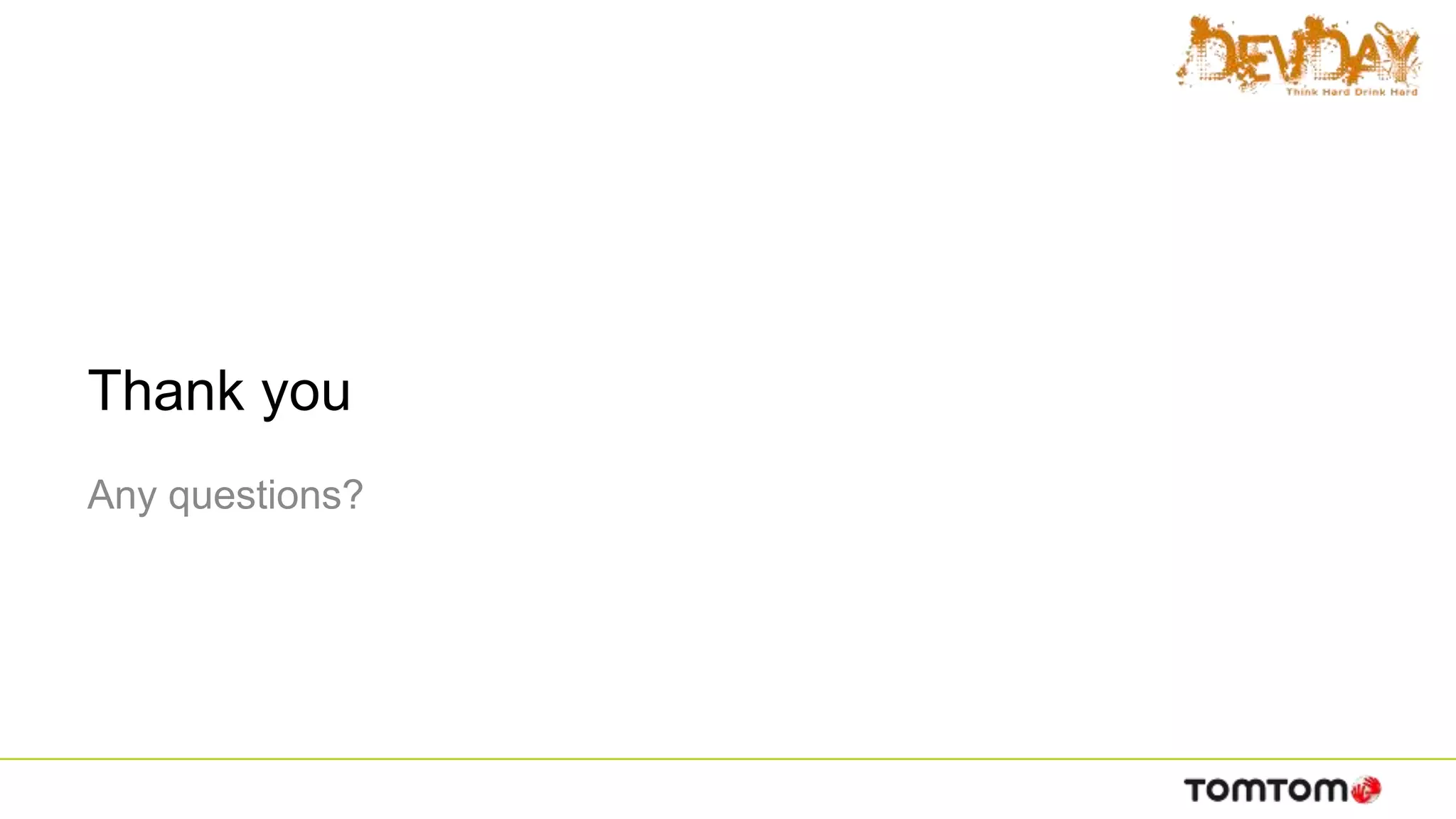This document discusses responsive web design using CSS3 and HTML5. It defines responsive web design as designing a single website that adapts to different screen sizes and devices through flexible grids and CSS media queries. The key benefits of responsive design are saving money and time through a single code base, improved performance across devices, better SEO through one unified URL, and wider browser support. It provides guidelines for responsive design like using a mobile-first approach, resizing images, hiding non-essential elements on small screens, and optimizing for fast loading and vertical scrolling on mobile. Popular frameworks that help with responsive design are also mentioned.
